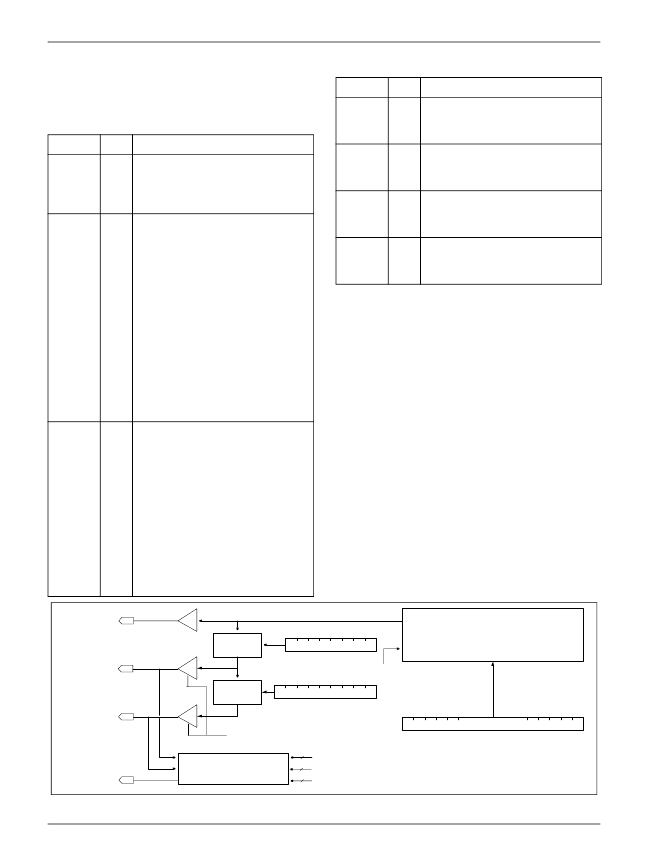- 您現(xiàn)在的位置:買賣IC網(wǎng) > PDF目錄382396 > PNX1302 (NXP Semiconductors N.V.) Media Processors PDF資料下載
參數(shù)資料
| 型號: | PNX1302 |
| 廠商: | NXP Semiconductors N.V. |
| 英文描述: | Media Processors |
| 中文描述: | 媒體處理器 |
| 文件頁數(shù): | 146/548頁 |
| 文件大小: | 6050K |
| 代理商: | PNX1302 |
第1頁第2頁第3頁第4頁第5頁第6頁第7頁第8頁第9頁第10頁第11頁第12頁第13頁第14頁第15頁第16頁第17頁第18頁第19頁第20頁第21頁第22頁第23頁第24頁第25頁第26頁第27頁第28頁第29頁第30頁第31頁第32頁第33頁第34頁第35頁第36頁第37頁第38頁第39頁第40頁第41頁第42頁第43頁第44頁第45頁第46頁第47頁第48頁第49頁第50頁第51頁第52頁第53頁第54頁第55頁第56頁第57頁第58頁第59頁第60頁第61頁第62頁第63頁第64頁第65頁第66頁第67頁第68頁第69頁第70頁第71頁第72頁第73頁第74頁第75頁第76頁第77頁第78頁第79頁第80頁第81頁第82頁第83頁第84頁第85頁第86頁第87頁第88頁第89頁第90頁第91頁第92頁第93頁第94頁第95頁第96頁第97頁第98頁第99頁第100頁第101頁第102頁第103頁第104頁第105頁第106頁第107頁第108頁第109頁第110頁第111頁第112頁第113頁第114頁第115頁第116頁第117頁第118頁第119頁第120頁第121頁第122頁第123頁第124頁第125頁第126頁第127頁第128頁第129頁第130頁第131頁第132頁第133頁第134頁第135頁第136頁第137頁第138頁第139頁第140頁第141頁第142頁第143頁第144頁第145頁當(dāng)前第146頁第147頁第148頁第149頁第150頁第151頁第152頁第153頁第154頁第155頁第156頁第157頁第158頁第159頁第160頁第161頁第162頁第163頁第164頁第165頁第166頁第167頁第168頁第169頁第170頁第171頁第172頁第173頁第174頁第175頁第176頁第177頁第178頁第179頁第180頁第181頁第182頁第183頁第184頁第185頁第186頁第187頁第188頁第189頁第190頁第191頁第192頁第193頁第194頁第195頁第196頁第197頁第198頁第199頁第200頁第201頁第202頁第203頁第204頁第205頁第206頁第207頁第208頁第209頁第210頁第211頁第212頁第213頁第214頁第215頁第216頁第217頁第218頁第219頁第220頁第221頁第222頁第223頁第224頁第225頁第226頁第227頁第228頁第229頁第230頁第231頁第232頁第233頁第234頁第235頁第236頁第237頁第238頁第239頁第240頁第241頁第242頁第243頁第244頁第245頁第246頁第247頁第248頁第249頁第250頁第251頁第252頁第253頁第254頁第255頁第256頁第257頁第258頁第259頁第260頁第261頁第262頁第263頁第264頁第265頁第266頁第267頁第268頁第269頁第270頁第271頁第272頁第273頁第274頁第275頁第276頁第277頁第278頁第279頁第280頁第281頁第282頁第283頁第284頁第285頁第286頁第287頁第288頁第289頁第290頁第291頁第292頁第293頁第294頁第295頁第296頁第297頁第298頁第299頁第300頁第301頁第302頁第303頁第304頁第305頁第306頁第307頁第308頁第309頁第310頁第311頁第312頁第313頁第314頁第315頁第316頁第317頁第318頁第319頁第320頁第321頁第322頁第323頁第324頁第325頁第326頁第327頁第328頁第329頁第330頁第331頁第332頁第333頁第334頁第335頁第336頁第337頁第338頁第339頁第340頁第341頁第342頁第343頁第344頁第345頁第346頁第347頁第348頁第349頁第350頁第351頁第352頁第353頁第354頁第355頁第356頁第357頁第358頁第359頁第360頁第361頁第362頁第363頁第364頁第365頁第366頁第367頁第368頁第369頁第370頁第371頁第372頁第373頁第374頁第375頁第376頁第377頁第378頁第379頁第380頁第381頁第382頁第383頁第384頁第385頁第386頁第387頁第388頁第389頁第390頁第391頁第392頁第393頁第394頁第395頁第396頁第397頁第398頁第399頁第400頁第401頁第402頁第403頁第404頁第405頁第406頁第407頁第408頁第409頁第410頁第411頁第412頁第413頁第414頁第415頁第416頁第417頁第418頁第419頁第420頁第421頁第422頁第423頁第424頁第425頁第426頁第427頁第428頁第429頁第430頁第431頁第432頁第433頁第434頁第435頁第436頁第437頁第438頁第439頁第440頁第441頁第442頁第443頁第444頁第445頁第446頁第447頁第448頁第449頁第450頁第451頁第452頁第453頁第454頁第455頁第456頁第457頁第458頁第459頁第460頁第461頁第462頁第463頁第464頁第465頁第466頁第467頁第468頁第469頁第470頁第471頁第472頁第473頁第474頁第475頁第476頁第477頁第478頁第479頁第480頁第481頁第482頁第483頁第484頁第485頁第486頁第487頁第488頁第489頁第490頁第491頁第492頁第493頁第494頁第495頁第496頁第497頁第498頁第499頁第500頁第501頁第502頁第503頁第504頁第505頁第506頁第507頁第508頁第509頁第510頁第511頁第512頁第513頁第514頁第515頁第516頁第517頁第518頁第519頁第520頁第521頁第522頁第523頁第524頁第525頁第526頁第527頁第528頁第529頁第530頁第531頁第532頁第533頁第534頁第535頁第536頁第537頁第538頁第539頁第540頁第541頁第542頁第543頁第544頁第545頁第546頁第547頁第548頁

PNX1300/01/02/11 Data Book
Philips Semiconductors
9-2
PRELIMINARY SPECIFICATION
AO_WS, left & right data in a frame).
LSB first, with 1
–
16-bit data per channel.
Complex serial frames of up to 512 bits/frame.
Up to 8 channels of audio output.
Table 9-1. AO unit external signals
9.3
SUMMARY OF OPERATION
The AO unit consists of three major subsystems, a pro-
grammable sample clock generator, a DMA engine and
a data serializer.
The DMA engine reads 16 or 32-bit samples from mem-
ory using a double buffered DMA approach. The
DSPCPU initially assigns two full sample buffers contain-
ing an integral number of samples for all active channels.
The DMA engine retrieves samples from the first buffer
until exhausted and continues from the second buffer,
while requesting a new first sample buffer from the
DSPCPU, etc.
The samples are given to the data serializer, which
sends them out in a MSB first or LSB first serial frame for-
mat that can also contain 1 or 2 codec control words of
up to 16 bits. The frame structure is highly programmable
by a series of MMIO fields.
9.4
INTERNAL CLOCK SOURCE
Figure 9-1
illustrates the different clock capabilities of the
AO unit. At the heart of the clock system is a square
wave DDS (Direct Digital Synthesizer). The DDS can be
Signal
Type
Description
AO_OSCLK
OUT
Over sampling clock. Can be programmed
to emit any frequency up to 40 MHz, with
sub-Hz resolution. Intended for use as the
256 or 384f
s
oversampling clock by the
external D/A conversion subsystem.
When AO is programmed to act as a
serial interface timing slave (RESET
default), AO_SCK acts as input. It
receives the serial clock from the exter-
nal audio D/A subsystem. The clock is
treated as fully asynchronous to the
PNX1300 main clock.
When AO is programmed to act as
serial interface timing master, AO_SCK
acts as output. It drives the serial clock
for the external audio D/A subsystem.
Clock frequency is a programmable
integral divide of the AO_OSCLK fre-
quency.
AO_SCK is limited to 22 MHz. The sam-
ple rate of valid samples embedded within
the serial stream is limited by the
AO_SCK maximum frequency and the
available highway bandwidth.
When AO is programmed as the serial-
interface timing slave (RESET default),
AO_WS acts as an input. AO_WS is
sampled on the opposite AO_SCK
edge at which AO_SDx are asserted.
When AO is programmed as serial-
interface timing master, AO_WS acts
as an output. AO_WS is asserted on
the same AO_SCK edge as AO_SDx.
AO_WS is the word-select or frame-sync
signal from/to the external D/A sub-
system. Each audio channel receives 1
sample for every WS period.
AO_WS can be set to change on
AO_OSCLK positive or negative edges by
the CLOCK_EDGE bit.
AO_SCK
IO
AO_WS
IO
AO_SD1
OUT
Serial data to stereo external audio D/A
subsystem. AO_SD1 can be set to
change on AO_OSCLK positive or nega-
tive edges by the CLOCK_EDGE bit.
Serial data to stereo external audio D/A
subsystem. AO_SD2 can be set to
change on AO_OSCLK positive or nega-
tive edges by the CLOCK_EDGE bit.
Serial data to stereo external audio D/A
subsystem. AO_SD3 can be set to
change on AO_OSCLK positive or nega-
tive edges by the CLOCK_EDGE bit.
Serial data to stereo external audio D/A
subsystem. AO_SD4 can be set to
change on AO_OSCLK positive or nega-
tive edges by the CLOCK_EDGE bit.
AO_SD2
OUT
AO_SD3
OUT
AO_SD4
OUT
Table 9-1. AO unit external signals
Signal
Type
Description
FREQUENCY
AO_OSCLK
AO_SCK
AO_WS
div N+1
SCKDIV
div N+1
Square Wave DDS
9
×
DSPCPUCLK
AO_SDx
Parallel to Serial Converter
16
16
LEFT[15:0]
RIGHT[15:0]
AO_CC[31:0]
(e.g. 64
×
f
s
)
WSDIV
31
0
7
0
0
8
(e.g. 256
×
f
s
)
32
Figure 9-1. AO clock system and I/O interface
SER_MASTER
相關(guān)PDF資料 |
PDF描述 |
|---|---|
| PNX1311 | Media Processors |
| PNX1500G | Connected Media Processor |
| PNX1501G | Connected Media Processor |
| PNX1502G | Connected Media Processor |
| PNX2000 | Audio video input processor |
相關(guān)代理商/技術(shù)參數(shù) |
參數(shù)描述 |
|---|---|
| PNX1302EH | 功能描述:數(shù)字信號處理器和控制器 - DSP, DSC MEDIA PROCESSOR PNX13XX/200MHZ RoHS:否 制造商:Microchip Technology 核心:dsPIC 數(shù)據(jù)總線寬度:16 bit 程序存儲器大小:16 KB 數(shù)據(jù) RAM 大小:2 KB 最大時鐘頻率:40 MHz 可編程輸入/輸出端數(shù)量:35 定時器數(shù)量:3 設(shè)備每秒兆指令數(shù):50 MIPs 工作電源電壓:3.3 V 最大工作溫度:+ 85 C 封裝 / 箱體:TQFP-44 安裝風(fēng)格:SMD/SMT |
| PNX1302EH,557 | 功能描述:數(shù)字信號處理器和控制器 - DSP, DSC MEDIA PROCESSOR PNX13XX/200MHZ RoHS:否 制造商:Microchip Technology 核心:dsPIC 數(shù)據(jù)總線寬度:16 bit 程序存儲器大小:16 KB 數(shù)據(jù) RAM 大小:2 KB 最大時鐘頻率:40 MHz 可編程輸入/輸出端數(shù)量:35 定時器數(shù)量:3 設(shè)備每秒兆指令數(shù):50 MIPs 工作電源電壓:3.3 V 最大工作溫度:+ 85 C 封裝 / 箱體:TQFP-44 安裝風(fēng)格:SMD/SMT |
| PNX1302EH/G,557 | 功能描述:數(shù)字信號處理器和控制器 - DSP, DSC NEXPERIA MEDIA PROC 200MHZ RoHS:否 制造商:Microchip Technology 核心:dsPIC 數(shù)據(jù)總線寬度:16 bit 程序存儲器大小:16 KB 數(shù)據(jù) RAM 大小:2 KB 最大時鐘頻率:40 MHz 可編程輸入/輸出端數(shù)量:35 定時器數(shù)量:3 設(shè)備每秒兆指令數(shù):50 MIPs 工作電源電壓:3.3 V 最大工作溫度:+ 85 C 封裝 / 箱體:TQFP-44 安裝風(fēng)格:SMD/SMT |
| PNX1311 | 制造商:PHILIPS 制造商全稱:NXP Semiconductors 功能描述:Media Processors |
| PNX1311EH,557 | 功能描述:視頻 IC NEXPERIA MEDIA PROCESSOR RoHS:否 制造商:Fairchild Semiconductor 工作電源電壓:5 V 電源電流:80 mA 最大工作溫度:+ 85 C 封裝 / 箱體:TSSOP-28 封裝:Reel |
發(fā)布緊急采購,3分鐘左右您將得到回復(fù)。